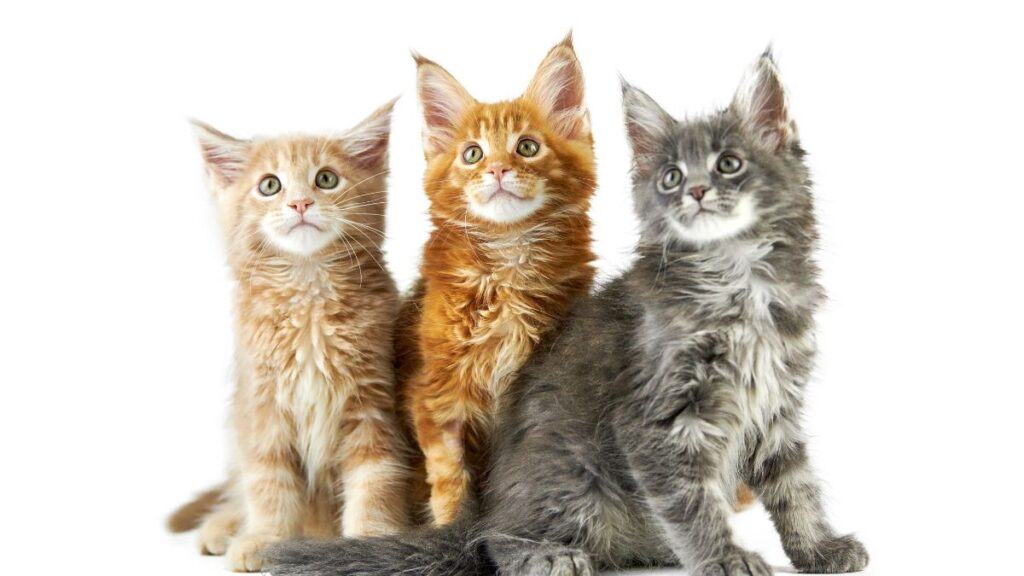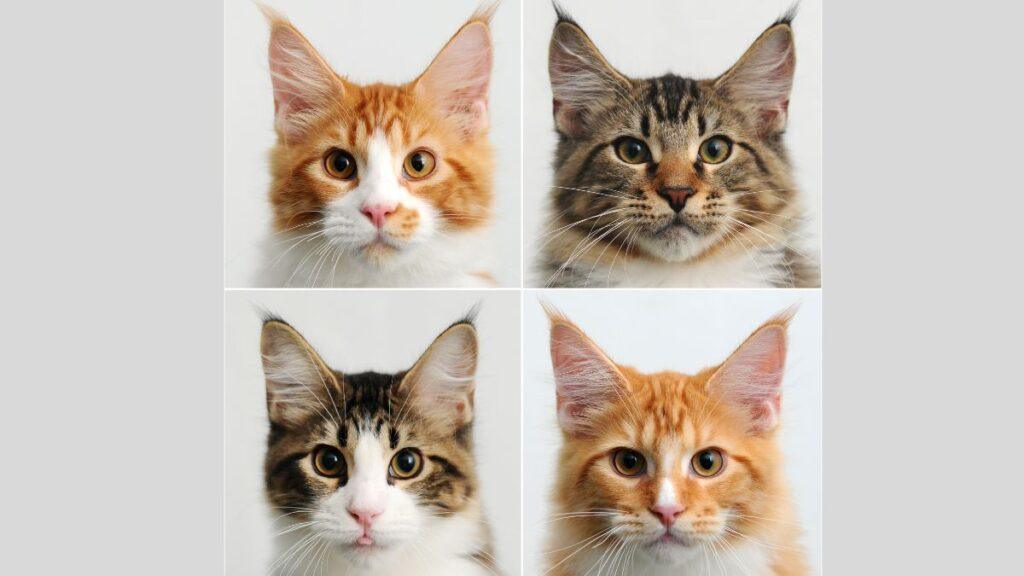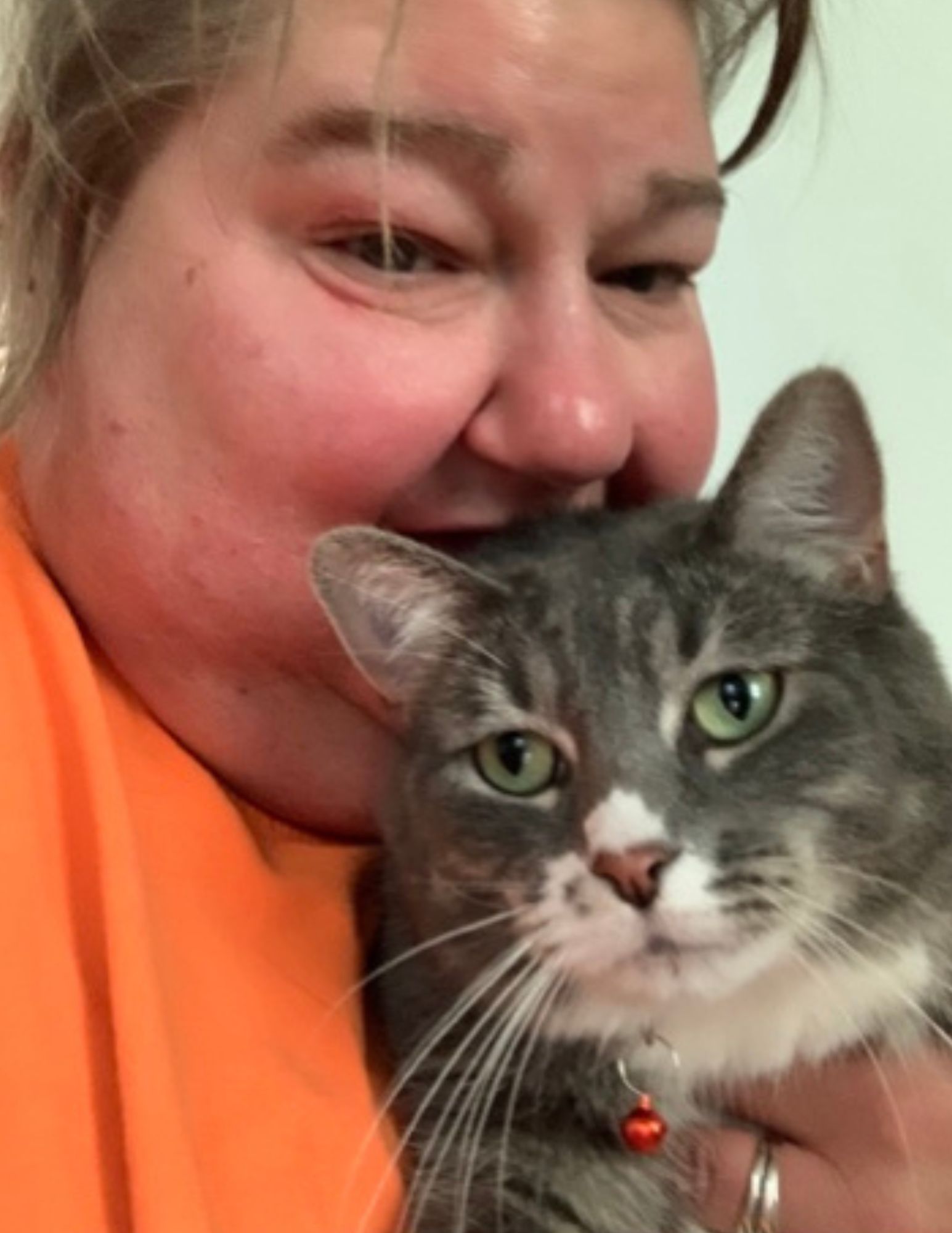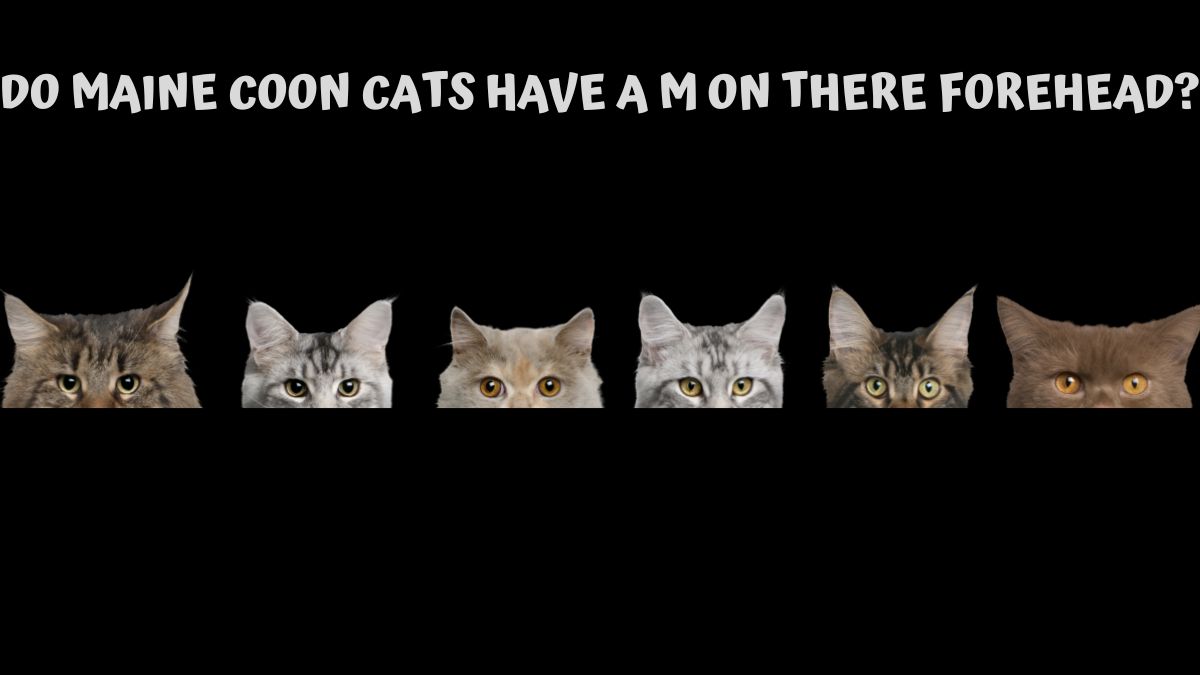In the vast and diverse world of feline breeds, the Maine Coon cat holds a special place in the hearts of many. Renowned as the “gentle giants” of the cat kingdom, these impressive creatures are not just large but also boast a grandeur that is both imposing and majestic.
Their luxurious, flowing mane, tufted ears, and large, expressive eyes set them apart, giving them a regal aura that few can resist. Yet, among the many unique traits of the Maine Coon, one stands out as particularly intriguing: the enigmatic “M” marking prominently displayed on their forehead.
This characteristic feature, steeped in folklore and mystery, has not only been a source of fascination for cat owners but has also spurred countless tales and speculations among feline enthusiasts across the globe.
Whether a mark of royalty, a symbol of a storied past, or simply a genetic gift, this “M” is a testament to the Maine Coon’s enduring charm and charisma.

The Historical Significance of Cats
From the mystic temples of ancient Egypt to the bustling streets of modern cities, cats have enjoyed a diverse and storied history with humans. Their journey with humanity has seen them evolve from revered deities to feared witches’ familiars, and from skilled hunters to beloved companions.
1. Cats in Ancient Egypt: In ancient Egyptian culture, cats were deeply revered and associated with the goddess Bastet, who was often depicted as a lioness or a woman with the head of a lioness. Cats were believed to possess protective qualities, especially against evil spirits. The act of harming or killing a cat, even accidentally, was considered a grave offense that could result in severe punishment.
2. Cats in Medieval Europe: The perception of cats shifted dramatically during the medieval period in Europe. They were often associated with witches and were believed to possess supernatural abilities. Cats, especially black ones, were unfortunately caught in superstitions and were sometimes persecuted due to the fear of the unknown and their association with witchcraft.
3. The Far East’s Affection: In places like China and Japan, cats were often seen as symbols of luck and prosperity. The “Maneki-Neko” or “beckoning cat” is a popular talisman believed to attract good fortune and is still widely used in businesses across Japan.
4. Cats in the United States: As time progressed, cats’ roles shifted again, especially in the United States. They transitioned from being primarily hunters and workers to being cherished members of households. By the 19th and 20th centuries, the appreciation for distinct cat breeds grew exponentially. The Cat Fanciers’ Association (CFA) was established to promote the interest and standards of purebred cats. Prestigious events, such as the ones held at Madison Square Garden, showcased the unique charm and allure of various breeds, including the regal Maine Coon.
The Maine Coon, with its rugged appearance, tufted ears, and friendly disposition, became a symbol of American feline sophistication. Their historical roots believed to be tied to the early settlers of the northeastern United States, give them a distinctive place in the annals of American pet history.
The journey of cats, from the deserts of ancient Egypt to the modern American living room, is a testament to their adaptability, charisma, and enduring bond with humans. They’ve been protectors, companions, symbols, and inspirations, proving their significance in human history is as vast and varied as the cultures they’ve touched.
Related: Maine Coon vs. Siberian: Similarities Between Both Cats

The Mystical ‘M’ of Maine Coon Cats
Across the annals of time, the intriguing ‘M’ marking that graces the forehead of Maine Coon cats has captured the imaginations of many. This mark, with its undying allure, has given birth to numerous legends, drawing ties to both spiritual and celestial realms.
1. Christian Folklore: Within the narrative of Christian lore, the Maine Coon’s distinctive ‘M’ carries a tale of divine gratitude.
As the legend goes, during a frigid night in Bethlehem, a Maine Coon cat crawled into the manger to keep the baby Jesus warm with its thick, insulating fur.
Touched by this act of kindness, Mother Mary marked the cat’s forehead with her initial ‘M’ as a token of her eternal gratitude, ensuring that all Maine Coons carried this blessing.
2. Islamic Legend: The Prophet Muhammad’s fondness for cats is well documented in Islamic traditions. Muezza, his favorite cat, was often seen by his side.
One story describes a time when Muezza slept on the Prophet’s robe. As he needed to leave, rather than disturbing her, he cut off the sleeve of his robe. In another heartwarming tale, it’s believed that once, Muezza saved Muhammad from a venomous snake that had taken refuge in his sleeve.
To honor and show his gratitude to Muezza, Prophet Muhammad is said to have marked her forehead with an ‘M’, symbolizing the bond and the protection she provided.
3. Ancient Egyptian Mythology: The ancient Egyptians, with their profound connection to the cosmos, had a unique interpretation of the Maine Coon’s ‘M’. For them, cats were not just earthly creatures but were celestial symbols.
The god of the moon, with its cyclical waxing and waning, was sometimes linked to the distinctive ‘M’ shape on Maine Coons.
Cats, with their nocturnal habits and reflective eyes, were seen as earthly representatives of the moon. The ‘M,’ thus, was believed to be a protective emblem, a mark of the moon that shielded them during their nighttime prowls and held an aura of divinity.
No matter which legend one subscribes to, the ‘M’ on a Maine Coon’s forehead remains an enchanting feature, evoking wonder and curiosity.
It’s a bridge that connects the Maine Coon to histories and cultures, transcending time and space. Whether a mark of divine blessing, protection, or celestial representation, this ‘M’ adds to the mystique that makes Maine Coon cats genuinely extraordinary.
Related: Manx Maine Coon Mix Cat: A Stubby Tailed Feline Breed

Deciphering the ‘M’ Through Science
When we delve into genetics and the intricacies of feline coat patterns, the magic of the ‘M’ marking is demystified yet remains just as fascinating.
1. The Tabby Gene: At its core, the ‘M’ marking, seen predominantly in Maine Coons among other cats, is a result of the tabby gene. Tabbies aren’t a cat breed; instead, “tabby” describes a coat pattern. Almost all domesticated cats carry the tabby gene, but it’s more pronounced in certain breeds and individual cats.
2. Types of Tabby Patterns: There are four primary tabby patterns, and each has its distinct markings:
- Mackerel Tabby: Named after the mackerel fish because of its thin, parallel stripes running down the cat’s sides. This pattern is often called “striped” and is the most common tabby pattern. The mackerel tabby usually has the pronounced ‘M’ marking on its forehead.
- Classic Tabby: Sometimes called “blotched” or “marbled,” this pattern exhibits thick, swirling patterns on the cat’s sides, resembling a marble cake. The ‘M’ is also typically present in this pattern.
- Ticked Tabby: These cats don’t have the traditional stripes or whirls but instead have individual hairs that are striped with alternating light and dark bands, giving the coat a “peppered” look. The face often exhibits the classic ‘M’ marking.
- Spotted Tabby: As the name suggests, these cats have spots that can be small, large, round, or oval. Along with the spots, the ‘M’ marking is often observed.
3. Genetic Factors: The specific patterns seen in tabbies, including the Maine Coon’s ‘M,’ are a result of specific gene combinations. The Agouti (A) gene determines whether a cat will have a tabby pattern. Other genes, such as the Tabby (T) gene, decide the type of tabby pattern (mackerel, classic, etc.). The interplay of these genes gives rise to the varied and unique patterns we observe.
4. Beyond Maine Coons: While the Maine Coon often garners attention due to its size and distinct appearance, many other breeds and non-pedigree cats also display the ‘M’ marking. It’s a shared emblem across the feline world wherever the tabby pattern is present.
While myths and legends offer romantic and mysterious explanations for the ‘M’ marking, science provides clarity. The beauty of genetics and the complexity of feline coat patterns highlight that even in nature, there’s a blend of art and science, mystery, and fact.
Related: Why is my Cat so Small? Understanding Feline Growth Patterns
Exploring the Maine Coon Breed
Originating in the northeastern region of the United States, Maine Coons are one of the largest and oldest domestic cat breeds. Their majestic appearance, coupled with their friendly and sociable nature, has earned them a cherished spot among feline enthusiasts worldwide.
1. Physical Characteristics:
- Coat: Their thick, shaggy coat is well-suited to colder climates. Comprising a soft undercoat and a water-resistant outer layer, it protects them against the elements. Maine Coons can sport a variety of coat colors and patterns, from solids to bi-colors, tabbies, and even tortoiseshells.
- Tail: One of their most distinctive features is their long, bushy tail, which they can wrap around themselves for warmth or balance.
- Eyes: Maine Coon eyes are large, expressive, and can vary in color. Some Maine Coons even have heterochromia – each eye being a different color.
- Size: Males are larger, often weighing 13 to 18 pounds, while females typically weigh between 8 to 12 pounds.
2. Origins and History: The exact origins of the Maine Coon are shrouded in mystery. Some believe they are descendants of cats brought over by Vikings. In contrast, others argue they resulted from the breeding of domestic shorthair cats with longhairs brought over by seafarers in the 19th century.
3. Temperament: Despite their imposing size, Maine Coons are often referred to as “gentle giants.” They are friendly sociable, and get along well with children and other pets. Their playful and patient nature makes them ideal companions.
4. The Fascinating ‘M’: Beyond the many myths associated with the ‘M’ marking on their forehead, it is an emblem of the breed’s rich lineage. While genetics and the tabby pattern are the scientific explanations for this marking, it remains a focal point of intrigue and admiration.
5. Health and Care: Maine Coons are generally robust, but they can be prone to specific genetic health issues, such as hypertrophic cardiomyopathy (a form of heart disease) and spinal muscular atrophy (a muscle condition, though not harmful to the cat). Regular vet check-ups and a well-balanced diet are essential to ensure they live a long, healthy life.
6. Popularity: The Maine Coon’s blend of majestic appearance, endearing temperament, and the air of mystery surrounding its origins has cemented its position as one of the most popular cat breeds in the world.
Maine Coons are not just a breed but a captivating blend of history, myth, and nature. Their multifaceted personalities, coupled with their stunning appearance, ensure they remain etched in the hearts of those fortunate enough to share their lives with them.
Related: Maine Coon Siamese Mix: A Fascinating Hybrid Cat Breed
Maine Coon Health Considerations
1. Hypertrophic Cardiomyopathy (HCM):
- Description: HCM is the most common heart disease in cats. It involves the thickening of the heart muscles, affecting the heart’s ability to pump blood effectively.
- Symptoms: Cats might display lethargy, difficulty breathing, rapid heart rate, and, occasionally, sudden hind limb paralysis due to blood clots.
- Prevention and Treatment: Regular veterinary check-ups, including echocardiograms, can detect early signs of HCM. Medications can manage symptoms, though it’s essential to catch this condition early. Genetic testing is available to identify carriers of the genes responsible for HCM, and responsible breeders screen their breeding cats to reduce its prevalence.
2. Hip Dysplasia:
- Description: This condition involves a malformation of the hip joint, which can lead to arthritis over time. Though more commonly associated with larger dog breeds, Maine Coons’ size makes them more susceptible among cats.
- Symptoms: Limping, decreased activity, difficulty jumping, or reluctance to climb stairs can indicate hip problems.
- Prevention and Treatment: Regular vet check-ups, maintaining a healthy weight, and providing joint supplements can help manage and potentially prevent severe hip issues. In extreme cases, surgical interventions might be required.
3. Spinal Muscular Atrophy (SMA):
- Description: SMA in Maine Coons is a genetic disorder that affects spinal cord neuron populations, leading to muscle wasting. It’s essential to note that this condition does not cause pain or suffering in affected cats.
- Symptoms: The main noticeable symptom is a particular swaying of the hindquarters when walking. However, it doesn’t affect the cat’s general health or lifespan.
- Prevention: As a genetic condition, the key to reducing its prevalence lies in responsible breeding practices. Breeders can test for the gene responsible for SMA and make informed decisions to minimize its spread.
4. Dental Issues:
- Description: Maine Coons can be prone to gingivitis and other dental problems.
- Symptoms: Bad breath, difficulty eating, drooling, or visible tartar buildup can be signs.
- Prevention and Treatment: Regular dental check-ups, teeth cleaning, and providing dental hygiene chews or toys can help maintain good oral health.
5. Regular Check-ups: Ensuring your Maine Coon has consistent vet visits is crucial. Annual or bi-annual check-ups can catch potential issues early on and help in the proactive management of any health conditions.
While Maine Coons are a robust and resilient breed, awareness of potential health issues and proactive care can make a considerable difference in their quality of life.
Engaging with responsible breeders and maintaining open communication with veterinarians ensures that Maine Coon owners are well-equipped to cater to their pet’s health needs.
For the Maine Coon Enthusiast
1. Deep Dive into History:
- Origins: While legends hint at Vikings and seafarers, the exact origins of the Maine Coon are shrouded in mystery. It’s believed that they emerged in the northeastern United States, with Maine being their namesake.
- Historical Significance: Beyond myths, Maine Coons were renowned mousers on ships and farms, prized for their hunting skills and temperament.
2. Character Traits:
- Personality: Often termed ‘dog-like’, Maine Coons can be affectionate, sociable, and even trainable to a degree. Their playful antics, combined with a gentle disposition, make them excellent companions for families.
- Vocalization: Their distinctive chirping and trilling sounds stand out from the typical cat meow, adding to their unique charm.
3. Grooming Needs:
- Coat Care: Their long, thick fur requires regular grooming to prevent matting, especially around the neck, where ‘ruffs’ are more pronounced. A weekly comb-through with a wide-toothed comb can do wonders.
- Bathing: While Maine Coons have water-resistant coats, occasional baths can help remove excess oil and dirt.
4. Play and Interaction:
- Physical Activity: Their playful nature means they enjoy interactive toys, climbing structures, and even fetch games.
- Mental Stimulation: Puzzle toys and treat-dispensing gadgets can keep their intelligent minds engaged.
5. Nutrition and Health:
- Diet: Given their larger size, they require a balanced diet with proper protein content. Monitoring their weight is essential to prevent obesity-related health issues.
- Water Intake: Maine Coons have a tendency to drink more water than other breeds. Ensure they have constant access to fresh water, and consider investing in a cat water fountain to pique their interest.
6. Social Needs:
- Companionship: While independent, they also enjoy the company, whether it’s other cats, dogs, or humans. If left alone for extended periods, ensure they have toys or activities to keep them occupied.
- Communication: Paying attention to their vocal cues, body language, and behaviors can help them understand their needs and moods.
7. Enriching their Environment:
- Vertical Spaces: Climbing trees or shelves can give them a high vantage point they often seek.
- Safe Outdoor Access: If possible, providing a secure outdoor enclosure or ‘catio’ can allow them to enjoy the outdoors without risks.
For the dedicated Maine Coon enthusiast, these cats are more than just pets – they are family. Embracing every facet of their personality, understanding their needs, and respecting their unique traits ensures a harmonious and fulfilling relationship.
After all, the beauty of the Maine Coon experience lies in the journey of mutual discovery and bond deepening over time.
“Summary of the Maine Coon Cat”
Maine Coon cats, with their iconic tabby coat pattern and distinct tabby markings, have long been revered. The brown tabby, classic tabby Maine Coon, and even the black smoke variations represent just a few of the many Maine Coon colors that have captured the hearts of cat lovers.
Their unique marking on the Maine Coon foreheads, precisely the ‘M’ pattern near the cat’s head, serves as a testament to their lineage.
This marking is not only characteristic of the Maine Coon cat breed but also resonates with stories from the Islamic religion, speaking of Prophet Mohammed and his beloved cat Muezza.
Maine Coons, whether they are part Maine Coon or purebred, showcase a spectrum of eye colors and interesting coat patterns that make them stand out among other long-haired breeds.
From the distinctive Maine Coon tabby cat to the majestic Norwegian forest cats and domestic shorthairs, each breed carries its charm.
However, the Maine Coon’s classic patterns, particularly the most common pattern of the ticked tabby Maine Coon, uphold the breed standards set for these gentle giants.
While scientific explanation gives us insights into their genetics, it is their history, interwoven with myths, that lends an aura of mystery.
Understanding the color of Maine Coon cat fur, appreciating the different colors, and recognizing their place among other breeds of cats, is crucial. Engaging with and understanding these feline protectors of history is the only way to truly value what they bring to our lives.

Meet Ann Haasnoot, the passionate founder of CatFurLife.com. A lifelong cat lover from Wisconsin, Ann combines her extensive feline behavior and care knowledge with her love for writing. On her website, she shares invaluable insights about cat breeds, care tips, and her experiences with her beloved furbaby, aiming to deepen the bond between cats and their human companions.

